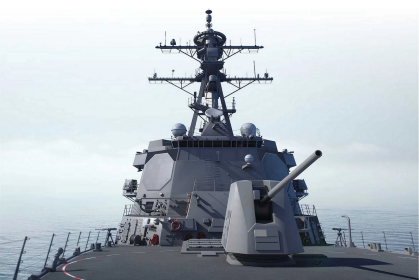With the increasing tendency to place electronics systems in virtually any spot that will hold them, how environmental elements impact an embedded enclosure has become more important than ever. Regardless of whether you’re talking in terms of “rain, sun, air and dust” or “moisture, heat, humidity and contaminants”, managing increased exposure to external elements is something system developers need to consider.

And because embedded systems are being put into more remote applications, as well, many embedded designers are faced with mitigating levels and variations of these elements that they may not have faced before during a system’s development. Weighing how adversely each aspect will affect an enclosure will help determine which ruggedized elements are most critical.
Design considerations from the start
To properly design a cabinet for today’s harsh, applications, it makes sense to take stock of what your needs are, then weigh them against different options available in cabinet selection. Starting with these six critical considerations will help you define crucial parameters:
1) Strength-to-weight ratio:
What force will be exerted on this enclosure, and what material will need to be used in the construction? Are there other external elements to consider in the structure of the rack system?
2) Modularity:
What level of modularity and flexibility does your application require?
3) Thermal profile:
What are the ways in which your rack system can facilitate thermal management, and how varying will temperature spikes be across the life of the system?
4) Equipment accessibility:
How easy does access to your cabinet need to be in order to make adjustments, reach specific areas or swap out components? Design a system knowing where access points need to be.
5) Quality of construction:
Is your system exposed to temperature fluctuations, and will there also be corrosive elements, such as salt spray or contaminants? Will its construction withstand the long-term shock and vibration of the application?
6) Testing requirements:
Influencing factors in the evolution of cabinet construction
There are some trends in the electronics industry that have impacted what we are seeing today in terms of cabinets design for harsh environments.
Denser computer systems: Those familiar with SWaP (size, weight and power) know how shrinking component size and increased system density has brought forth new dimensions of where and how electronics can serve a purpose. Placing computers in remote locations, and in finite spaces, has mandated the need for rack systems that make the best use of not just available space, but of the actual construction and features of the rack itself.

Cloud computing and IoT: By removing the need to house data onsite, cloud computing has redefined networked systems. No longer bound by physical locations and constraints, data freely moves through the air to find a home and foster collaboration and deeper insights among computing systems across the globe. In addition, edge computing is not only accepted, but expected, putting even tougher requirements on electronics housings to ensure they withstand a multitude of harsh environmental and mechanical impacts.
Flexible enclosure and cabinet solutions: From a practical standpoint, replicated, standardized environments are not the same as what you’d typically find in a central office or server room. Being able to construct a housing that fits the space and application needs, while ensuring these highly compact systems can reliably transfer large quantities of sensitive data is now a normal part of the development process.
Laying the groundwork for rugged cabinet design
Identifying application requirements upfront and owning up to the pitfalls that a system may be subjected to as well as knowing how to best meet environmental considerations will go a long way in developing the proper enclosure system.
First and foremost, determine the “what” and “what if” of the development process, instead of being an afterthought. The construction and design of your cabinet platform is just as important as the purpose and function of the electronics it holds.
Learn more methods and considerations in our white paper titled "What to Consider When Selecting a Cabinet for Harsh Environments".

